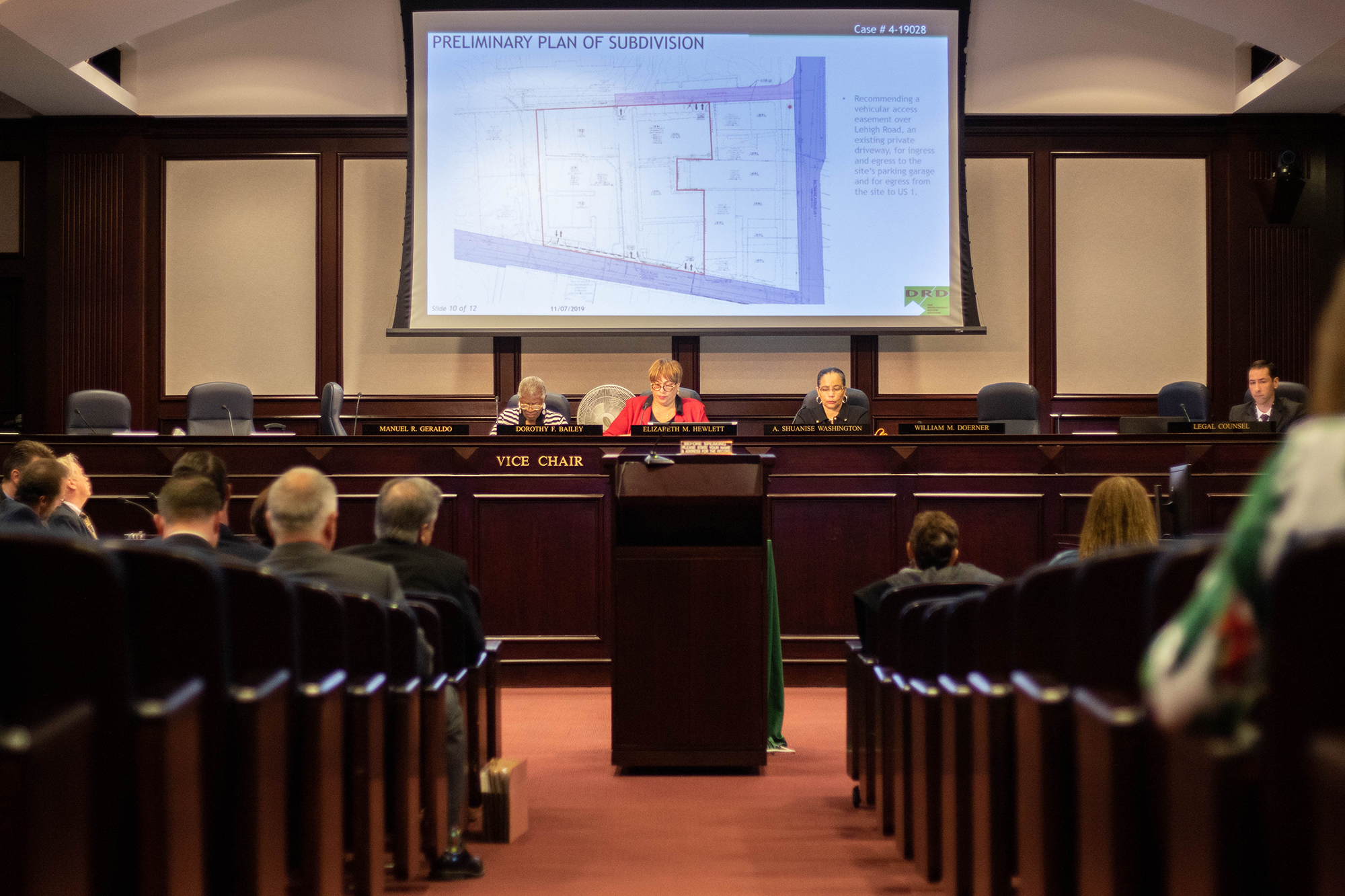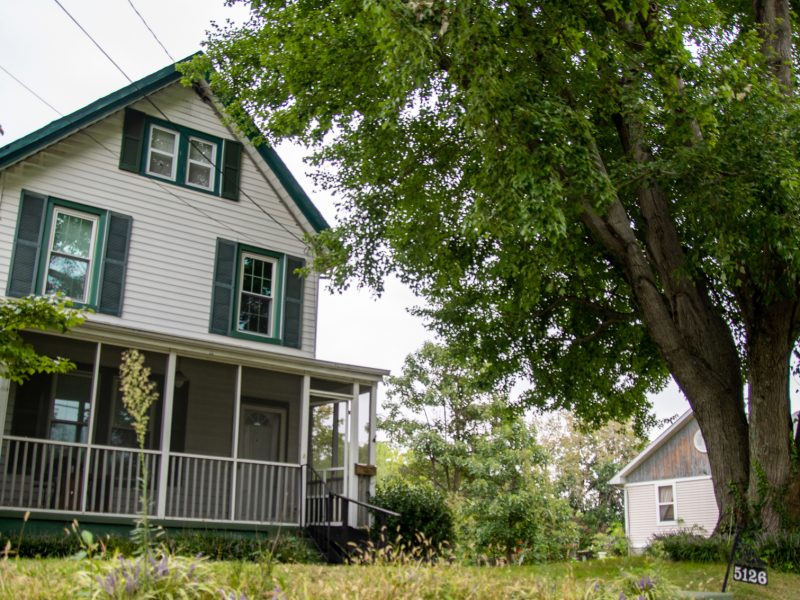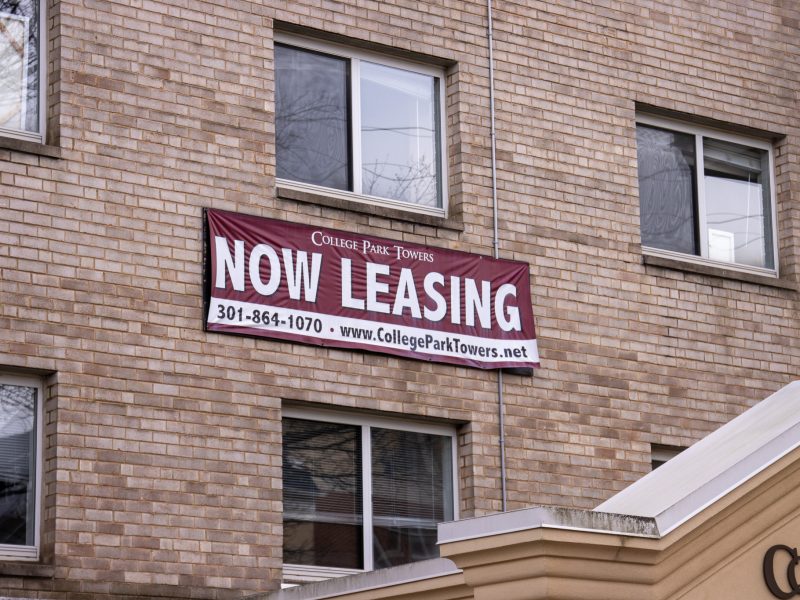The Prince George’s County planning board unanimously voted to pass a developer’s initial plans to replace several popular storefronts near the University of Maryland campus with an apartment building earlier this month — but that’s far from a green light on the project.
That action represents the last step in the first phase of an extensive development review process. Below, we explain the ins and outs of that process to clarify what exactly has happened — and what comes next.
[Read more: Plan to replace Marathon Deli, Lotsa and other UMD shops moves forward in review process]
Phase One: Preliminary plans of subdivision
It’s probably more complicated to develop in College Park than in many other cities, said Terry Schum, the city’s planning director. This is because of a series of strict development standards that include the land around Route 1.
Prince George’s County’s processes can differ based on land’s development and zoning laws, but for the most part, they all begin the same way.
First, an independent developer files preliminary plans of subdivision with the Maryland National Capital Park and Planning Commission — the agency with authority over planning and zoning in Prince George’s and Montgomery counties.
The preliminary plans of subdivision look at two main things: how to redraw property lines on a plot of land to fit a new development and how that development will accommodate public facilities such as transportation adequacy, Schum said.
When it receives the application, the M-NCPPC ensures that all documents are in order before officially accepting the application.
Within the next 70 days, the applicant is guaranteed a public hearing before the board — but there’s plenty of activity going on while the clock is ticking.
[Read more: North College Park is burgeoning with over $10M in new developments]
Phase One, Part Two: The countdown
After official acceptance, the M-NCPPC loops in all the different agencies that work in parks and planning — including the city of College Park.
Only then does the city get official notice about developments planned within its jurisdiction, Schum said. But typically, developers have told the city planning department about their plans by then.
“They realize that they need city support, and they realize they can get … input from city staff,” Schum said.
Then all of the agencies involved come together to give their thoughts and concerns at a meeting called the Subdivision and Development Review Committee meeting.
“It’s not a final staff report. It’s not a final recommendation, but everybody sits around the table,” Schum said. “All those different departments and agencies and municipalities … get an opportunity to state directly to the applicant what their major issues are.”
If the agencies appear to have several issues with the plans, M-NCPPC might give the developers 70 more days to revise the project and submit more information about it. But regardless of whether the developer gets an extension, they must turn in all project materials to county staff 30 days before the final hearing date, Schum said.
In all of this, College Park officials can only give their opinion, College Park Mayor Patrick Wojahn said. Approving preliminary plans — and major developments in general — is out of the city’s hands.
That doesn’t mean the city has no influence, though.
“It only really matters what the county does,” Schum said. “I hate to say that. But, as you can tell, we influence those conditions. The city staff works closely with the county staff to try to be on the same page, and with the applicant.”
Once all final materials are in and the hearing is 30 days away, city planning staff begins drafting a report to present to the council within the following weeks. Based on what the report tells the council, it decides whether to support the plans.
“Sometimes that creates a timing issue for us, because as I just said, it’s 30 days before the planning board hearing,” Schum said.
The report is first presented to the council during a work session meeting to allow for questions from council members before they vote on the plans during a regular meeting session.
Council members have three options when presented with new development plans: support them as they are, support them with conditions recommended by staff or oppose them.
Opposing plans that are consistent with local development requirements can be dicey, said Wojahn. Even if the city council doesn’t support a development, the county can still pass it. If the county decides to approve the plans despite the city’s opposition, the city could be shut out of the project.
So, if the council takes issue with some parts of a plan, it often chooses to support the plan on the condition that the developer revise it to appease its concerns, Wojahn said.
“We try to shape the way that the development looks,” Wojahn said. “Since we can’t prevent developments from coming in, we want to make sure that the impacts that the development has are overall beneficial to the community.”
Once the council votes on the plans, the documents move on to the county planning board hearing, where the board typically votes on whether to approve them.
Unless the city, a civic association or a person who has registered with the county as a “party of record” appeals the decision within 30 days of the board’s vote, the board’s decision is final. The review process then moves into its second phase.
Phase Two: Detailed site plans
If the county approves the preliminary plans — as it recently did for the Greystar development — a developer’s next step to building in College Park is to file detailed site plans.
Schum said detailed site plans are exactly what they sound like: They include specific details on how a planned development will look, from its architecture to signage to streetscaping.
Once filed, detailed site plans go through a review process almost identical to preliminary plans.
There’s two key differences in the processes. Instead of the initial 70-day period with a potential 70-day extension, a developer can request to delay their public hearing almost indefinitely, Schum wrote in an email.
And if the planning board approves the detailed site plans but the county council disputes the decision in some way, the county council has an opportunity to overrule it within 30 days of its making by calling a second hearing.
The project’s fate ultimately rests with the county council.
Without a second hearing, the planning board’s decision becomes final, at which point developers can start the permitting and construction process — and the creation of new landmarks and community spaces begins.



